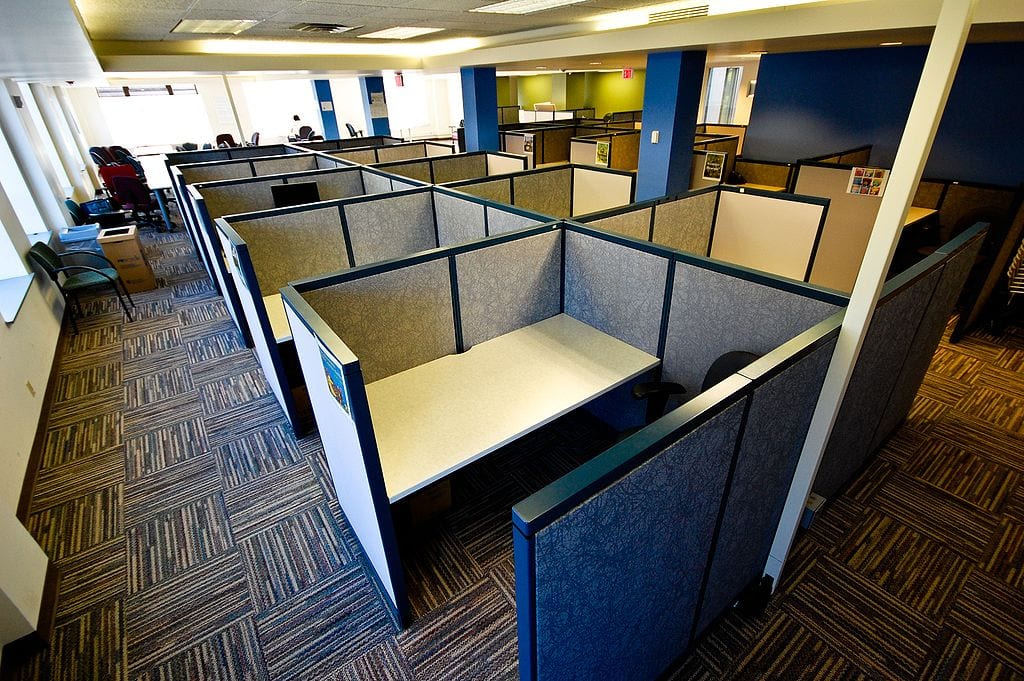Several articles this week have validated what I keep advising to leaders: Give employees their own private offices or access to as many private office spaces as possible. Why? Consider these statistics and anecdotes.
Knowledge Workers Need Privacy
As I state in “The CEO Tightrope,” researchers say that 28 to 45 percent of employees in the United States are knowledge workers. However, I define a knowledge worker as anyone who must make decisions based on a unique set of conditions that change from situation to situation. I think that applies to a much higher percentage of workers than the researchers allow.
With the daily customer demands for better products and services, companies need most of their employees to make smart judgments to achieve the best outcome. This is how companies foster innovation and succeed in the market.
To achieve this, employees need to feel that they have some level of autonomy and control over their jobs, and this includes access to work spaces where they can think and produce.
Environment Matters
In “6 New Secrets To Managing Your Time,” Dan Ariely, a behavioral economist at Duke University and bestselling author, says “control your environment or it will control you.” He asks: “What does research show the most productive computer programmers have in common? It’s not experience, salary, or hours spent on a project. They had employers who created an environment free from distraction.”
This is based on research that Susan Cain cites in her book “Quiet: The Power of Introverts in a World That Can’t Stop Talking.” She describes a study called the “Coding War Games” by Tom DeMarco and Timothy Lister of the Atlantic Systems Guild. To identify the characteristics of the best and worst computer programmers, they enlisted more than 600 developers from 92 companies. Each person had to design, code and test a program working in his or her own office space during normal business hours. The results revealed a huge performance gap, as Cain explains.
“The best outperformed the worst by a 10:1 ratio. The top programmers were also about 2.5 times better than the median. When DeMarco and Lister tried to figure out what accounted for this astonishing range, the factors that you’d think would matter – such as years of experience, salary, even the time spent completing the work – had little correlation to outcome.”
What was the reason for this? “It was a mystery with one intriguing clue: programmers from the same companies performed at more or less the same level, even though they hadn’t worked together. That’s because top performers overwhelmingly worked for companies that gave their workers the most privacy, personal space, control over their physical environments, and freedom from interruption. Sixty-two percent of the best performers said that their workspace was acceptably private, compared to only 19 percent of the worst performers; 76 percent of the worst performers but only 38 percent of the top performers said that people often interrupted them needlessly.”
If this doesn’t make the case, I don’t know what does. (See also this article about how the large company that acquired one of my start-ups tried to force our software developers into 6’ x 6’ cubes).
Don’t Make People Compete for Conference Room Space
Another article, this one by Sue Shellenbarger in The Wall Street Journal, discusses how employees are continually fighting over conference rooms. She cites research by Steelcase Inc., which found that 40 percent of employees waste up to 30 minutes per day wandering around looking for meeting space. In addition, the time spent in meetings is rising by eight to ten percent annually, according to Bain & Co. Architecture and design firm HOK says that 73 percent of meetings involve only two to four people, but more than half of all conference rooms are built for meetings of seven or more people.
Clearly, fewer meetings and more private office spaces would alleviate this.
Down with Cubicles
On that note, even the guy who invented the cubicle lamented his creation, according to an article in Entrepreneur. Designer Robert Propst introduced “The Action Office II” in 1968, which was a modular workstation designed give employees privacy, flexibility, and accessibility to co-workers when needed. As we know, companies soon began to reconfigure his design into small boxes to save money. He told The New York Times in 1997: “The cubicle-izing of people in modern corporations is monolithic insanity.”
Featured image credit: By Asa Wilson (CubeSpace) [CC-BY-SA-2.0 (http://creativecommons.org/licenses/by-sa/2.0)], via Wikimedia Commons






Indeed, the linkage between employee engagement, customer loyalty and corporate (financial) performance is extremely compelling. (More here… Employee Engagement and Profit – Which Comes First? http://bit.ly/aykG8L)
Companies that seek short-term cost-saving “wins” are mortgaging their future.
Some other ways to determine if your company is stuck in the dark ages… http://bit.ly/9Prg3J